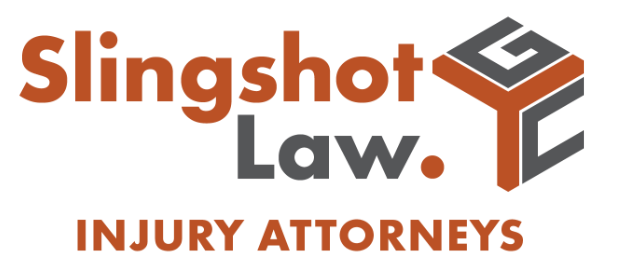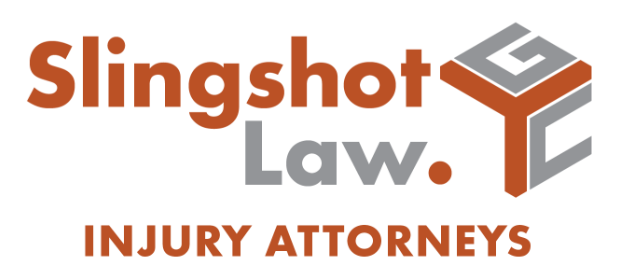Collisions on I-35, MoPac, or neighborhood intersections happen in seconds but create complications that last months or years. At Slingshot Law, our Austin car accident lawyer gets to work immediately building your claim by securing police reports, dash-cam footage, witness statements, and medical records before evidence disappears.
We handle the investigation, documentation, and negotiation that transforms your experience into evidence. While you focus on physical therapy, follow-up appointments, and returning to normal life, we preserve surveillance footage, download event data recorders, and coordinate specialist evaluations that prove the scope of your injuries and losses.
Call us now for a free case review at (866) 647-1311.
Key Takeaways for Austin Car Accident Claims
- Traffic-camera footage, dash-cam video, and event data recorders disappear or overwrite within days of collisions, early preservation is crucial
- Early settlement offers may undervalue claims, as initial proposals often exclude future medical costs, permanent impairment, and pain-and-suffering damages.
- The at-fault driver’s liability policy, your uninsured/underinsured motorist coverage, and third-party defendants create layered recovery opportunities
- Medical documentation links injuries to the crash, establishing causation that is harder for adjusters to dismiss
- Slingshot Law’s contingency fees eliminate financial barriers for victims and their families
Why Choose Slingshot Law for Your Austin Car Accident Claim

Car accident cases require immediate evidence preservation and knowledge that separates adequate representation from results that fairly compensate injury victims.
Trial Preparation Drives Settlement Value
Insurance carriers recognize which firms settle quickly and which prepare cases for trial. We coordinate accident reconstructionist, biomechanical engineers, and economists, when warranted, who translate crash dynamics into expert testimony. This preparation helps convince adjusters that proceeding to trial could cost more than fair settlement offers.
Our Austin trial team has recovered significant verdicts and settlements in collision cases throughout Travis County. When settlement negotiations stall or offers remain inadequate, we are ready to proceed to litigation rather than advising clients to accept less than their claims are worth.
Evidence Preservation Prevents Critical Losses
Crash evidence vanishes quickly without legal intervention:
- Spoliation letters notify defendants and witnesses of their legal duty to preserve records, footage, and physical evidence
- Scene investigation captures road conditions, sight-line obstructions, traffic-control devices, and skid marks before weather or repairs eliminate them
- Witness interviews collect statements while memories remain detailed and contact information is current
- Vehicle inspection photographs damage patterns proving impact severity before repairs begin
Our team is not afraid to get to work and take necessary steps to build a strong, evidence-backed claim.
Local Knowledge Strengthens Cases
We represent car accident victims throughout Travis, Williamson, and Hays counties. Cur familiarity with Travis County courts, local insurance adjusters, and regional traffic patterns informs strategy decisions from initial demand letters through trial preparation.
Contingency Fees Align Our Interests With Yours
Car accident cases sometimes require investment in police reports, medical records, expert witnesses, accident reconstruction, and biomechanical analysis. We advance these costs without requiring upfront payment.
Families managing medical bills and lost income should not also finance litigation costs. Our contingency-fee structure means we recover expenses only if we win compensation through settlement or verdict.
Contact us to schedule a free case consultation with a Austin car crash attorney: (866) 647-1311.
Types of Car Accidents in Austin
The type of collision helps identify liable parties and predict injury patterns. The angle and force of impact also determines which evidence proves fault and which injuries are consistent with crash dynamics.
Some types of car accident we see in Austin are:
- Rear-end collisions occur when following drivers fail to maintain safe distances at traffic lights or during sudden stops. The rear driver typically bears fault unless the lead vehicle reversed or stopped without reason.
- T-bone (side-impact) crashes happen at intersections when drivers run red lights or fail to yield right-of-way. Determining which driver had the green light or legal right-of-way becomes critical to establishing fault.
- Head-on collisions result from wrong-way driving, crossing center lines, or losing control on curves. These crashes produce the most severe injuries due to combined impact speeds.
- Sideswipe accidents occur during unsafe lane changes or when drivers drift out of their lanes on highways like I-35 or MoPac. Dash-cam footage and witness statements prove which driver crossed lane markings.
- Single-vehicle crashes involve collisions with fixed objects, guardrails, or rollovers. These cases may involve road defects, vehicle malfunctions, or tire failures creating liability beyond driver error.
- Multi-vehicle pileups on highways create complex liability chains. Determining which driver’s negligence initiated the chain reaction requires detailed accident reconstruction.
While collision type shapes the investigation, understanding why crashes occur reveals the driver behaviors and road conditions that establish negligence.
Common Causes of Car Accidents in Austin
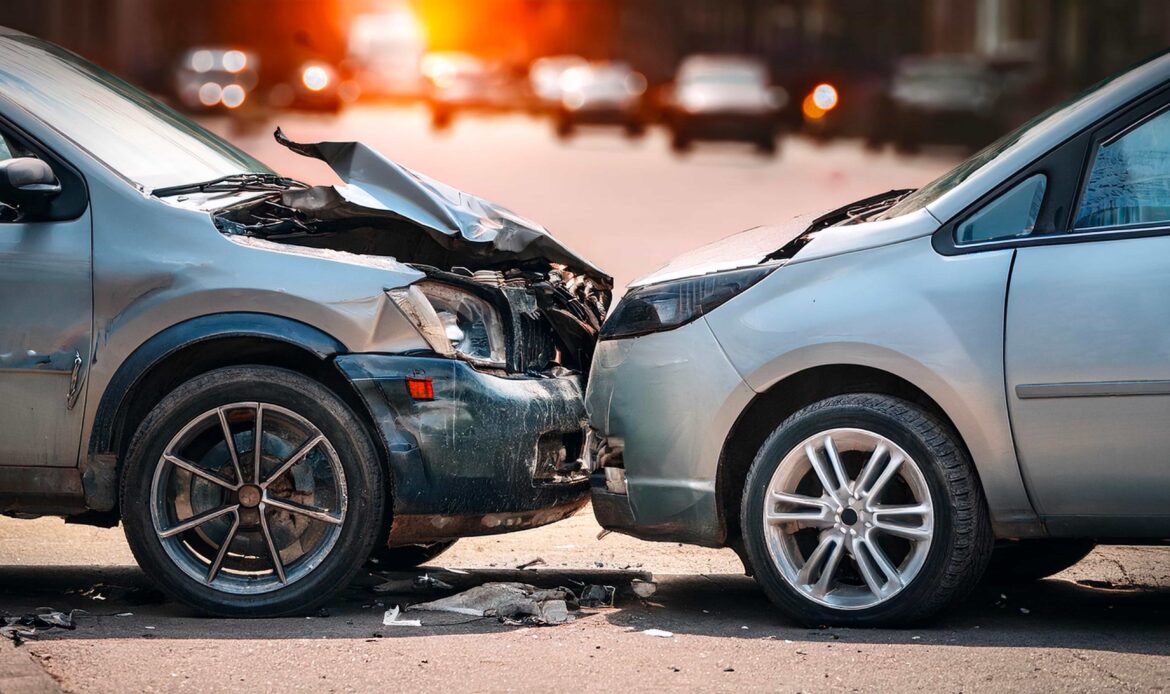
Traffic volume throughout Austin and surrounding communities like Round Rock, Cedar Park, Georgetown, and San Marcos creates collision risks on high-speed corridors and residential streets. Understanding how your crash occurred determines which evidence proves negligence.
Distracted Driving
Distracted driving from cell-phone use, texting, GPS adjustment, or passenger interactions causes drivers to miss traffic signals, drift across lanes, or rear-end stopped vehicles. Subpoenaed cell-phone records show texts or calls at the time of the crash.
Impaired Driving
Impaired driving from alcohol or drugs reduces judgment, slows reaction times, and causes aggressive lane changes. Police reports document field sobriety tests, breathalyzer results, and blood alcohol content. Bar receipts and witness statements from establishments on East Sixth Street or Rainey Street establish overservice patterns.
Fatigued Driving
Fatigued driving from long work shifts, overnight travel, or untreated sleep disorders slows reaction times similar to impairment. Commercial drivers operating delivery trucks or rideshare drivers working extended hours face particular fatigue risks. Cell-phone records and work logs establish hours behind the wheel.
Speeding
Speeding through congested areas near the University of Texas campus, Downtown Austin, or during rush-hour traffic on Ben White Boulevard reduces driver response time and increases collision severity. Event data recorders capture vehicle speed in seconds before impact.
Failing to Yield
Failure to yield at intersections, crosswalks, or when merging onto MoPac or US 183 causes T-bone crashes and pedestrian accidents. Traffic-camera footage documents right-of-way
Following Too Closely
Following too closely (tailgating) eliminates the time needed to brake safely when traffic slows or stops. Rear-end collisions at traffic lights on Lamar Boulevard or South Congress during rush hour result from inadequate following distance. Damage patterns and witness statements establish fault.
Unsafe Lane Changes
Unsafe lane changes without checking blind spots or signaling cause sideswipe collisions on multi-lane highways like I-35 and MoPac. Drivers who cut across multiple lanes to reach exits force other vehicles to brake suddenly or swerve into adjacent lanes.
Running Red Lights and Stop Signs
Running red lights and stop signs causes intersection collisions with severe injuries. Drivers rushing through yellow lights or rolling through stop signs in residential neighborhoods near Zilker Park or Hyde Park create danger for crossing traffic and pedestrians.
Weather-Related Conditions
Weather-related conditions, including rain on slick overpasses, fog reducing visibility on highway corridors, or rare ice events, create hazardous driving conditions. Drivers who fail to reduce speed or increase following distance during adverse weather cause preventable collisions.
How We Prove Liability in Austin Car Accident Claims
Insurance adjusters evaluate fault and injury severity when reviewing and investigating claims. At Slingshot Law, our car accident attorneys in Austin, TX, gather relevant evidence to support your claim for compensation.
Evidence we secure in Austin car accident cases may include:
- Austin Police Department or Texas DPS crash reports
- Photographs of vehicle damage, road conditions, and visible injuries
- Witness statements collected immediately after crashes
- Traffic-camera and dash-cam footage
- Event data recorder downloads showing speed, braking, and steering inputs
- Cell-phone records and toxicology results proving distraction or impairment
- Commercial driver logs and rideshare app data for work-related or Uber/Lyft crashes
While medical records may prove an injury, it is important to link that injury to a cause. Evidence needs to show how the accident occurred and who is to blame. Addressing all parts helps prove liability and supports your claim.
Injuries and Damages in Austin Car Accident Cases
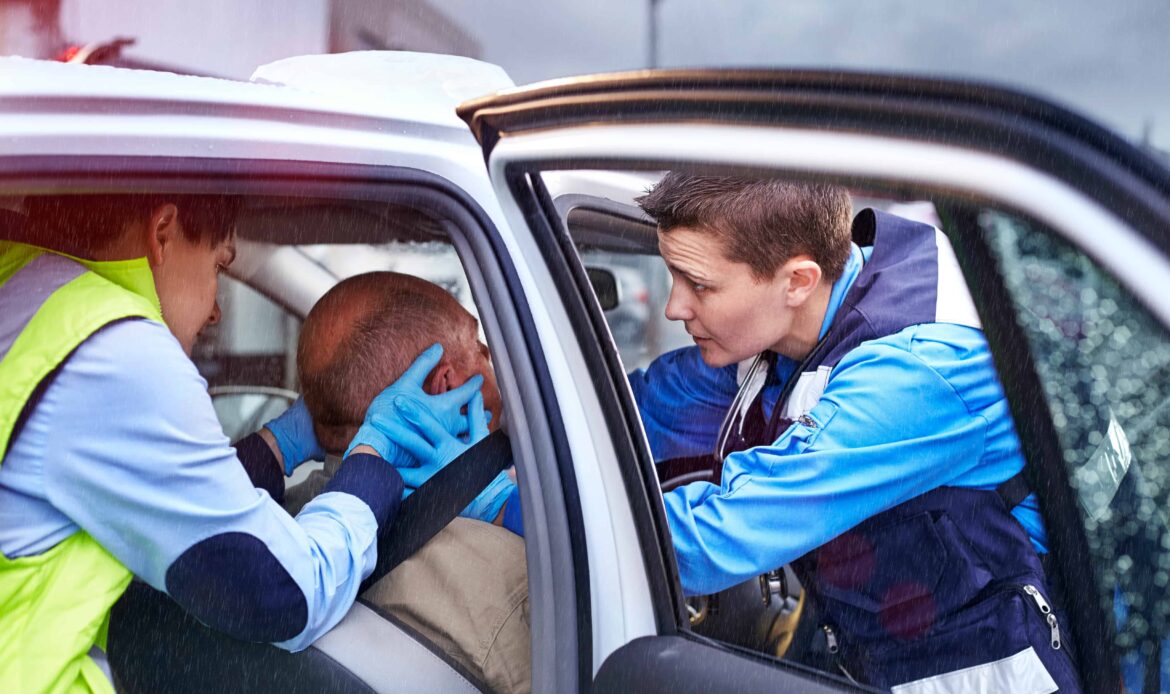
Car accidents cause injuries ranging from soft-tissue strains requiring weeks of physical therapy to catastrophic trauma demanding surgery and long-term rehabilitation. The type and severity of injury are one of the most important factors in determining what compensation you may recover.
Common Car Accident Injuries
Some examples of motor vehicle accident injuries include:
- Neck and spine injuries, including strains, whiplash, and cervical spine damage cause headaches, dizziness, and reduced range of motion that may not appear for days after impact.
- Fractures and broken bones in arms, legs, ribs, pelvis, and facial bones result from impact forces. Compound fractures breaking through the skin require immediate surgical intervention, while stress fractures may not show symptoms until days later.
- Torso and internal injuries, including rib fractures, internal organ damage, and pelvic injuries, require emergency intervention.
- Head and brain injuries, including traumatic brain injuries, facial fractures, and chest trauma, occur when occupants strike steering wheels, dashboards, or side panels despite airbag deployment.
- Lacerations and soft-tissue damage from broken glass, metal fragments, and airbag deployment cause cuts requiring stitches, bruising, and scarring. Deep lacerations may damage nerves, tendons, or blood vessels, requiring reconstructive surgery.
- Pedestrian and cyclist injuries, including road rash, fractures, and head trauma, result from impacts with pavement or vehicle hoods.
Compensation Categories Under Texas Law
Texas law permits recovery for both economic and non-economic losses:
- Past and future medical expenses, including emergency care, hospitalization, surgery, physical therapy, chiropractic treatment, and pain management
- Lost wages from missed work during treatment and recovery documented through employer statements
- Diminished earning capacity when permanent injuries prevent returning to prior employment
- Property damage for vehicle repair or replacement, rental car expenses, and diminished value
- Pain and suffering from physical injuries and reduced quality of life
- Mental anguish, including anxiety, depression, and post-traumatic stress
- Physical impairment affecting daily activities and independence
Understanding Texas Fault Rules
Texas Civil Practice & Remedies Code § 33.001 applies proportionate responsibility in personal injury cases. If a jury assigns you partial fault for the collision, your recovery reduces by that percentage. Assignment of more than 50 percent fault bars recovery entirely.
Defense attorneys might try to argue victims were speeding, distracted, or failed to maintain proper lookout, even when the other driver violated clear traffic laws. Early investigation documents the at-fault driver’s violations while preserving evidence that establishes your reasonable conduct.
What to Do After a Car Accident in Austin
Actions taken immediately after a collision shape claim outcomes and settlement prospects.
- Seek medical evaluation even without obvious injury. Internal injuries, soft-tissue damage, and concussions may not produce immediate symptoms.
- Follow specialist referrals and treatment plans. Gaps in treatment let adjusters argue injuries were not serious.
- Document the accident scene, if safe. Photograph vehicle damage from multiple angles, road conditions, traffic signals, skid marks, and visible injuries. Record witness contact information. Note weather, lighting, and traffic volume.
- Obtain the police report. Austin Police Department crash reports are available at APD headquarters at 715 E 8th Street or through online request systems. The Texas Department of Public Safety handles highway crashes.
- Preserve all receipts and records. Save medical bills, pharmacy receipts, physical therapy invoices, mileage logs for appointments, and wage-loss statements from employers.
- Do not give recorded statements to adjusters. Early statements may result from confusion and before you know the extent of your injuries. Politely decline and refer them to your attorney.
- Avoid social media posts about the crash. Insurance companies monitor Facebook, Instagram, and LinkedIn for content contradicting disability claims.
- Contact an Austin car accident lawyer immediately. Slingshot Law preserves surveillance footage, issues spoliation letters, and coordinates medical documentation while you focus on recovery.
Texas Car Accident Insurance
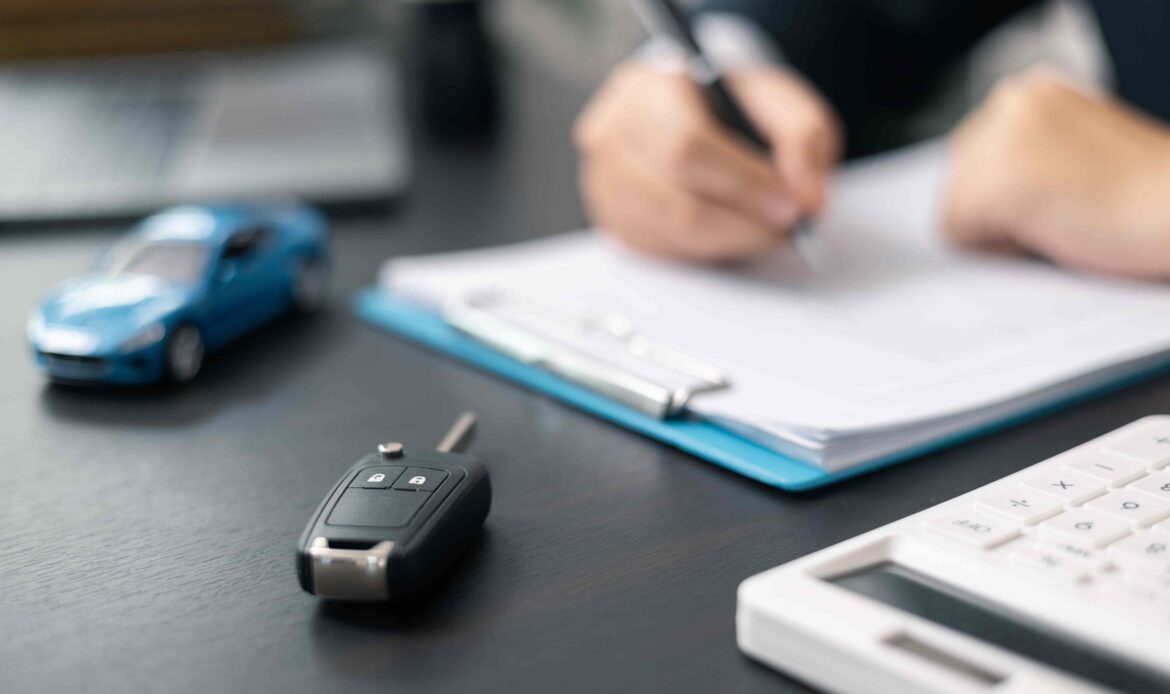
Texas operates under an at-fault insurance system, meaning the negligent driver’s liability coverage pays for damages they cause. Texas Transportation Code § 601.072 requires minimum liability coverage of $30,000 per person for bodily injury, $60,000 per accident for bodily injury, and $25,000 for property damage.
These minimums can prove inadequate for serious injuries. We identify potential defendants, such as negligent drivers, their employers for work-related crashes, establishments that served alcohol to impaired drivers, and government entities responsible for dangerous road conditions, to improve the chances of fair compensation.
Uninsured and Underinsured Motorist Coverage
Uninsured motorist (UM) coverage pays for injuries when the at-fault driver has no insurance or flees in hit-and-run crashes. Underinsured motorist (UIM) coverage provides additional compensation when the at-fault driver’s liability limits are insufficient.
These coverages are optional in Texas but provide critical protection. Our Texas injury attorneys pursue UM/UIM claims on your own policy when at-fault drivers lack adequate insurance, coordinating subrogation issues and policy-limit negotiations.
FAQ for Austin Car Accident Claims
Do I Need an Austin Car Accident Lawyer?
You are not required to hire an attorney to pursue a car accident claim, but representation could substantially improve settlement outcomes and relieve the burden of navigating complex insurance negotiations.
How Long Do I Have to File a Car Accident Claim in Texas?
The Texas statute of limitations allows two years from the crash date. Filing promptly eliminates deadline concerns and preserves evidence before it disappears or witnesses relocate.
Should I Talk to the Insurance Adjuster or Give a Recorded Statement?
No. Texas law does not require cooperation with the at-fault driver’s insurer before litigation. Politely decline and direct them to your attorney.
What if the At-Fault Driver Has No Insurance?
Uninsured motorist coverage on your own policy provides compensation when at-fault drivers lack insurance or flee in hit-and-run crashes. Slingshot Law also works to identify other potentially liable parties.
What Happens if My Loved One Died in a Car Accident?
Texas wrongful death law allows surviving spouses, children, and parents to pursue compensation for funeral expenses, lost financial support, loss of companionship, and mental anguish. These claims must be filed within two years of the date of death (not the accident).
Contact a Slingshot Law Austin Car Accident Lawyer
Car accidents create financial pressure, physical pain, and uncertainty about recovery. You need representation that understands both the medical and legal aspects of collision cases.
Call (866) 647-1311 to discuss your Austin car accident claim. Free case review with no obligation. We advance all case expenses and recover fees only if we win compensation.
Let our Austin car accident injury attorneys handle investigations, negotiations, and legal strategy while you focus on treatment, recovery, and returning to your normal routines.
Austin Office
Address: 1802 Lavaca St, Austin, TX 78701
Phone: 866-647-1311
